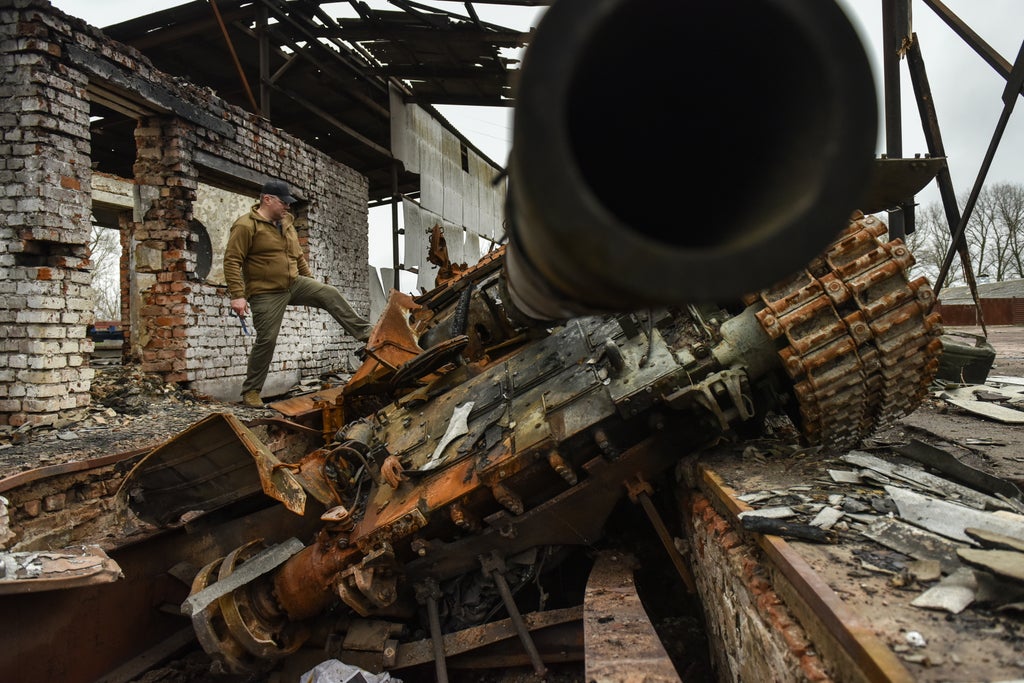
Vokzalnaya Street in Bucha was a landscape of desolation and carnage, filled with the abandoned skeletons of Russian tanks torn apart by Ukrainian artillery and missiles, with the broken and burned bodies of soldiers trapped in the twisted metal.
It was an image in miniature of the destruction we saw on the road to Basra and outside Benghazi, when the forces of Saddam Hussein and Muammar Gaddafi were caught in the open and pulverised by western aircraft in the first Gulf war and the Arab spring.
The scenes in Iraq and Libya were grim reminders of the lethal powers of first-world militaries unleashed on weaker states.
The vivid and violent signs of Russian losses in Bucha, as well as in Irpin and Makariv, Hostomel, Brovary and Chernihiv were, however, evidence of how a superpower had failed to impose regime change on a smaller country.
These towns, from where we were due to face blitzkrieg descending on Kyiv, have been won back by the Ukrainians. Vladimir Putin’s supposed plan to carry out “decapitation” of Ukraine – beginning with the swift capture of the capital – has caused much damage, but has failed.
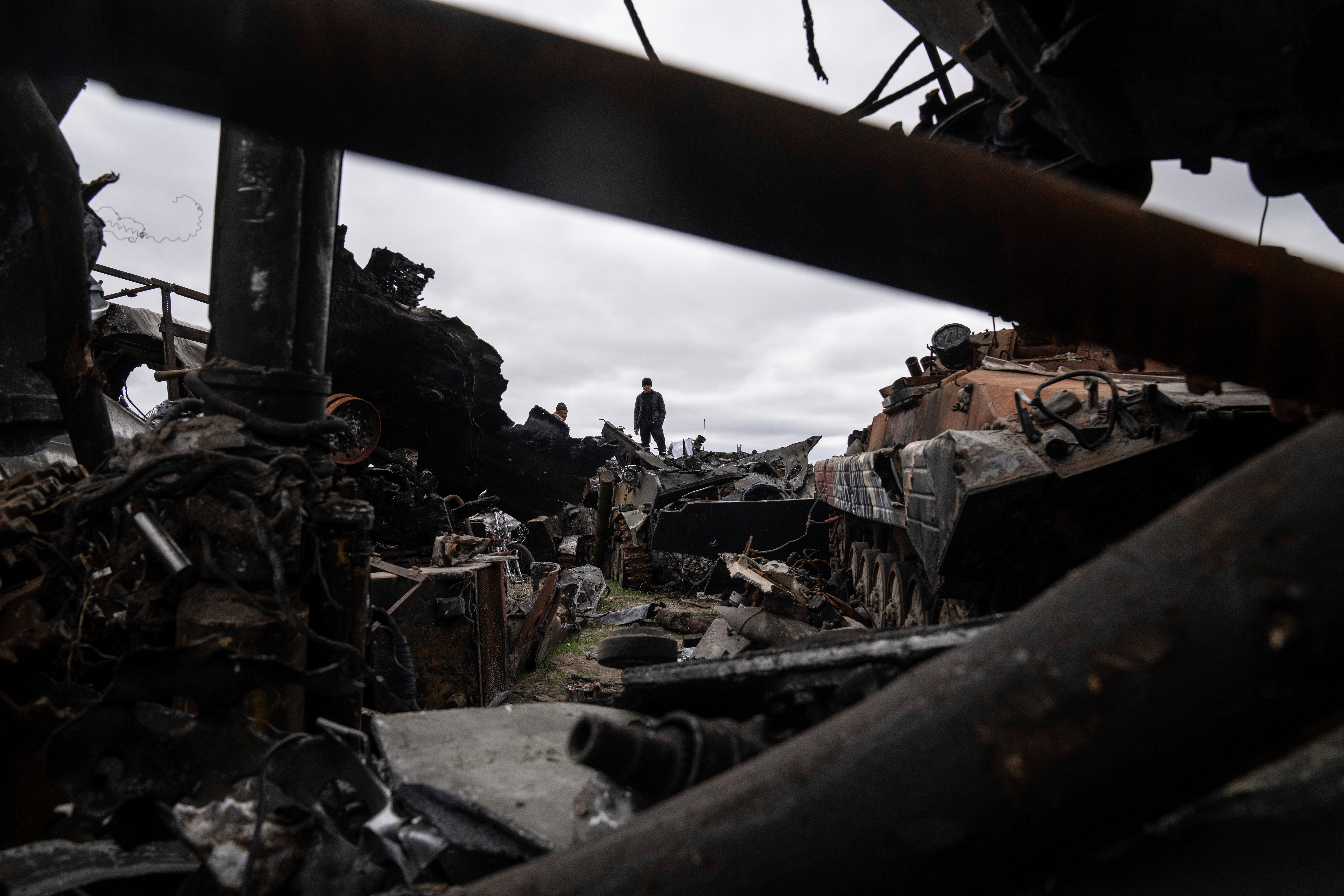
This was the end of the beginning of this extraordinary and astonishing war. The final outcome is yet to be played out in the battles for the Donbas. But what has been unfolding in Ukraine is of seismic significance – a chapter in shaping modern history commensurate with the fall of the Berlin Wall and the 9/11 attacks and their aftermaths.
It was not geopolitics that Captain Nicolai, who did not want his family name published, was talking about in Bucha as he watched the dead Russian soldiers, some of them barely past their teens, being laid out by his men on a patch of ground sprinkled with spent ammunition and holes filled with glistening leaked oil.
“I don’t feel any pity for them: none. Maybe I will be able to one day, but not now. You have seen what they have done here: killings, rapes,” he said. “More will come out on that, believe me. They were meant to be soldiers, they behaved like savages.”
It was a former member of the Soviet military who showed some of the examples of the savagery in Bucha.
Sergei Simolenskiy is convinced that the only reason he survived was because of his tattoo. “They arrested me a few times. One time they had me standing for over three hours with my hands against the wall,” he said. “At the end they had a gun in the back of my head, I could hear the click of the safety coming off and knew they were going to shoot. Then they saw my tattoo and realised I used to be a marine, I had served, and they let me go.”
Mr Simolenskiy, 50, served in the Soviet forces in early 1990s and was deployed in the war in Georgia. He now feels nothing but anger against the Russian troops in Ukraine.
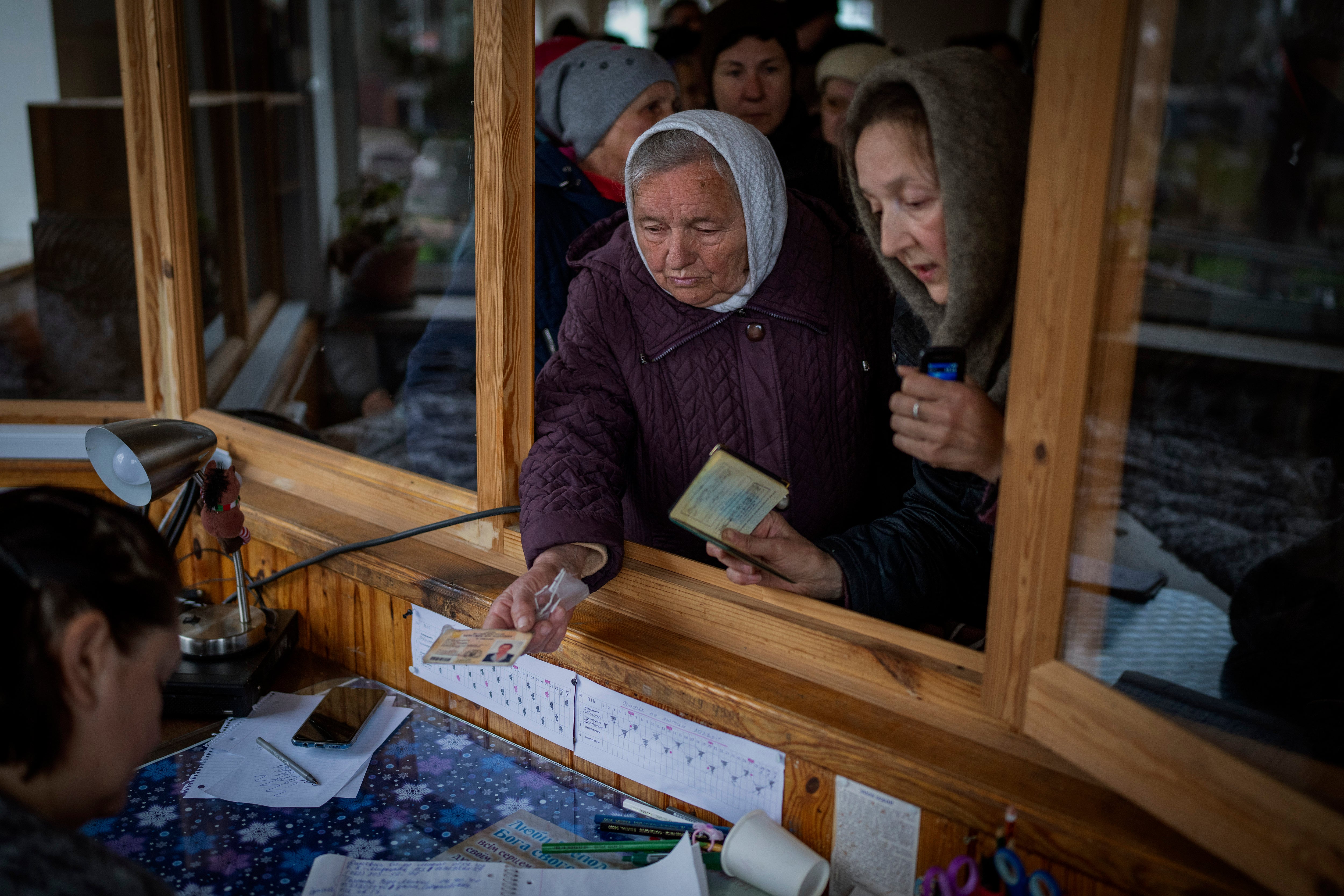
“They have done some terrible things,” he said. “I have seen them arrest people, tie them up and shoot them in the head. How many did they kill? I would say around 600 or 700. They left the bodies in the streets, I saw a dog eating a man’s head one day. There are lots of dogs on the street because their owners have left or have gone missing.”
Some of those killed by the Russians had their hands tied behind their backs, some have been hooded with bullet holes in the back of the heads.
“They were left to rot after they died, as if they were bags of rubbish,” said Dimitrou Zamohylny in Vokzalnaya Street. “In that time flocks of crows sat on the bodies, pecking out and eating eyes. I had never thought I would see anything like that happening, actually happening near my own house. How could anyone even imagine something so bad, in a place like this?”
Mr Simolenskiy took me to the largest grave in the city, behind the Church of St Andrew and Pyervozvannoho All Saints, where the estimates of numbers buried range from 60 to around 320 or even more.
Mounds of brown earth are piled up over a pit 45ft long, into which corpses in black plastic bags have been flung. Some of the bags have split, with legs and arms protruding. Limbs have broken free among the buried, rising up from the soil, one palm is cupped as if in supplication.
There are still bodies left in houses. One was that of 89-year-old Alla Minorava, lying on her bed, with bloodstains on her arms. She died on 25 March. Russian soldiers who had taken over her house told neighbours they had shot her.
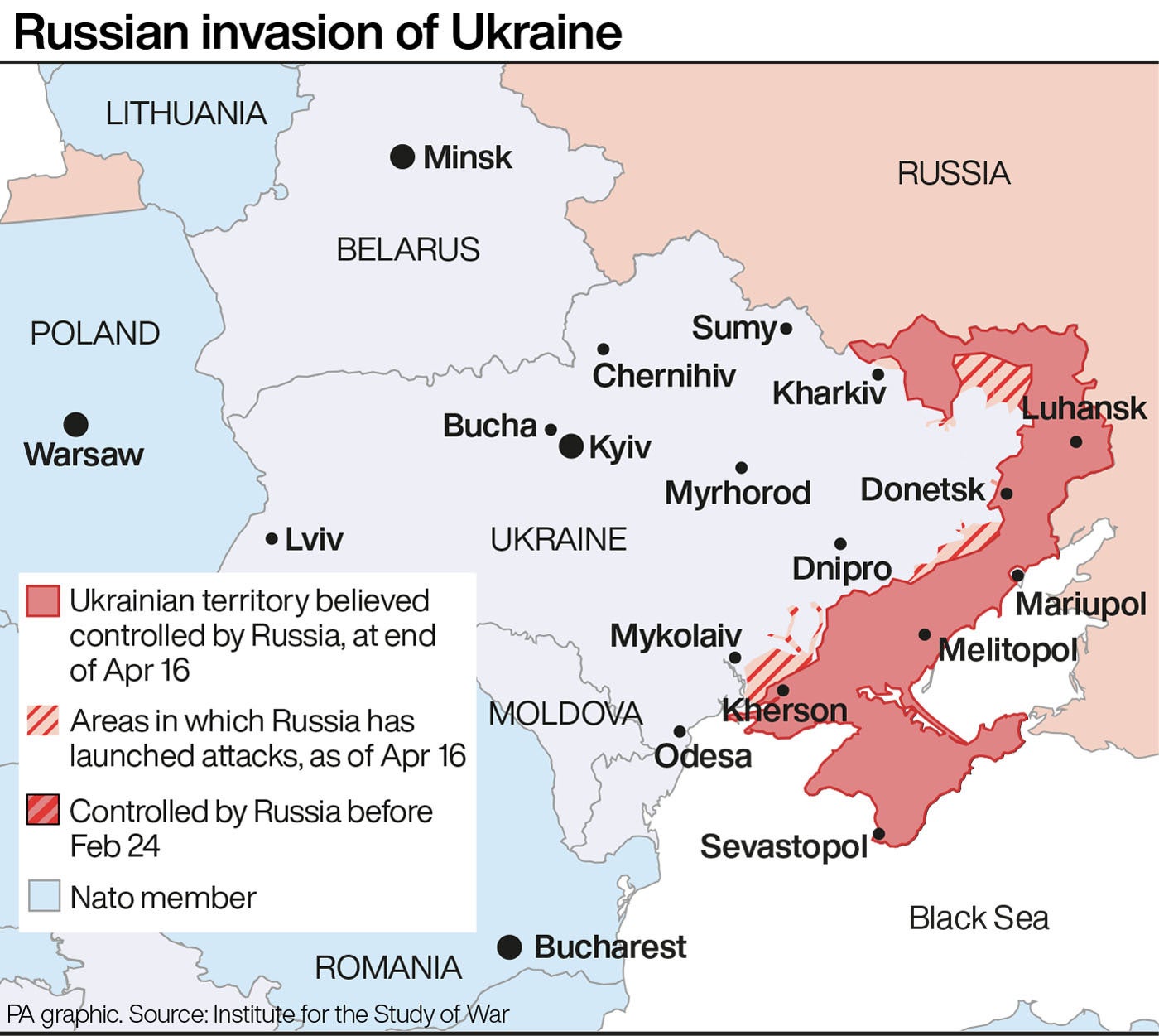
Ms Minorava’s grandchildren were among members of the family who hid in a basement while the Russians ransacked the place. “Those hiding in the basement, especially the children, were terrified. They could hear the Russians getting drunk, smashing the place up above them,” said Sergei Malyk, a relative. “But at least they did not die like poor Alla.”
What will happen in the Donbas, many believe, will be even worse than what has befallen Bucha, Mariupol or Kharkiv. The horrific bombing of the railway station in Kramatorsk, killing 50 people including children, was, it is feared, an example of what to expect.
The bitter conflict in the east has a personal element to it. Many of the fighters on opposing sides were from the same Russian-speaking communities before the separatist war which led to the dismemberment of the country in 2014.
Captain Nicolai did not want his family name published because his parents still live in Slovyansk, one of the first cities to take part in the separatist rebellion and now a prime target for capture by Russian forces.
“My mother and father did not want to leave. They have been in our home for 34 years – they said they would fight there if the Russians came,” he said. “They are old people, they have a lot of pride, they are set in their ways. Of course, you worry about them being in the east.”
I first met Nicolai in the Donbas in 2014 when he was taking part in a firefight for Donetsk airport. Then a year later at Debaltseve as he was lying on a stretcher in bloodied bandages, one of the hundreds injured alongside the 270 Ukrainian soldiers killed in a battle on which the separatists, backed by Russian artillery, had the whip hand.
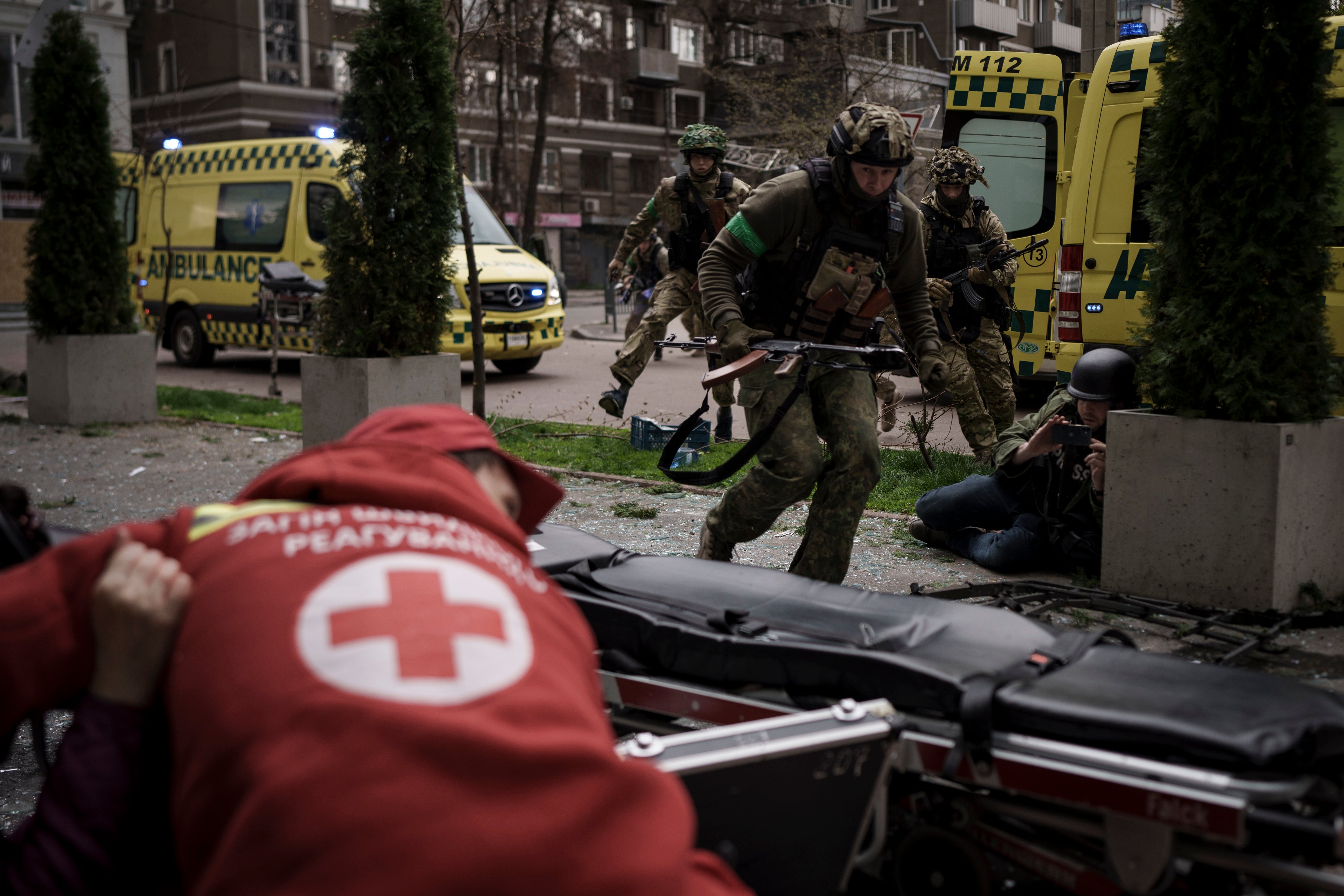
The last time I met him was in Kramatorsk, a few weeks before this war began. He and others in his unit were not sure whether a war would take place. When I pointed to repeated American and British intelligence briefings that Putin intended not only to attack, but conquer the country, the question was whether the west would stand by Ukraine by sending troops and weaponry.
Having been in Afghanistan last summer when the Joe Biden-led western betrayal allowed the Taliban to take over, with allies entitled to evacuation abandoned, I cautioned against over-expectation. Arms, perhaps in large numbers, would certainly be sent, was my view, but there would be no boots on the ground.
There were also those in Russian-speaking towns and cities who accused the west of trying to orchestrate a war with Russia.
In Kharkiv, 25 miles from the Russian border where 74 per cent of the 1.4 million population are Russian speakers, angry local Kiril Semenov declared: “It is unthinkable for me and my friends to pick up a gun and start fighting the Russians. We have lived together all our lives and now there are people who are trying to turn us into enemies and start a bloodbath.”
As Mr Semenov spoke in the city’s famous Freedom Square, a place later bombed by the Russians, a woman trudging through the snow, stopped to have her say: “They try to create an impression that Kharkiv is an anti-Russian city – we are not. The Russians are our brothers and will never do us harm, even less attack us. All this is propaganda from the US and Nato. Ukraine should be lucky to have a leader like Putin.”
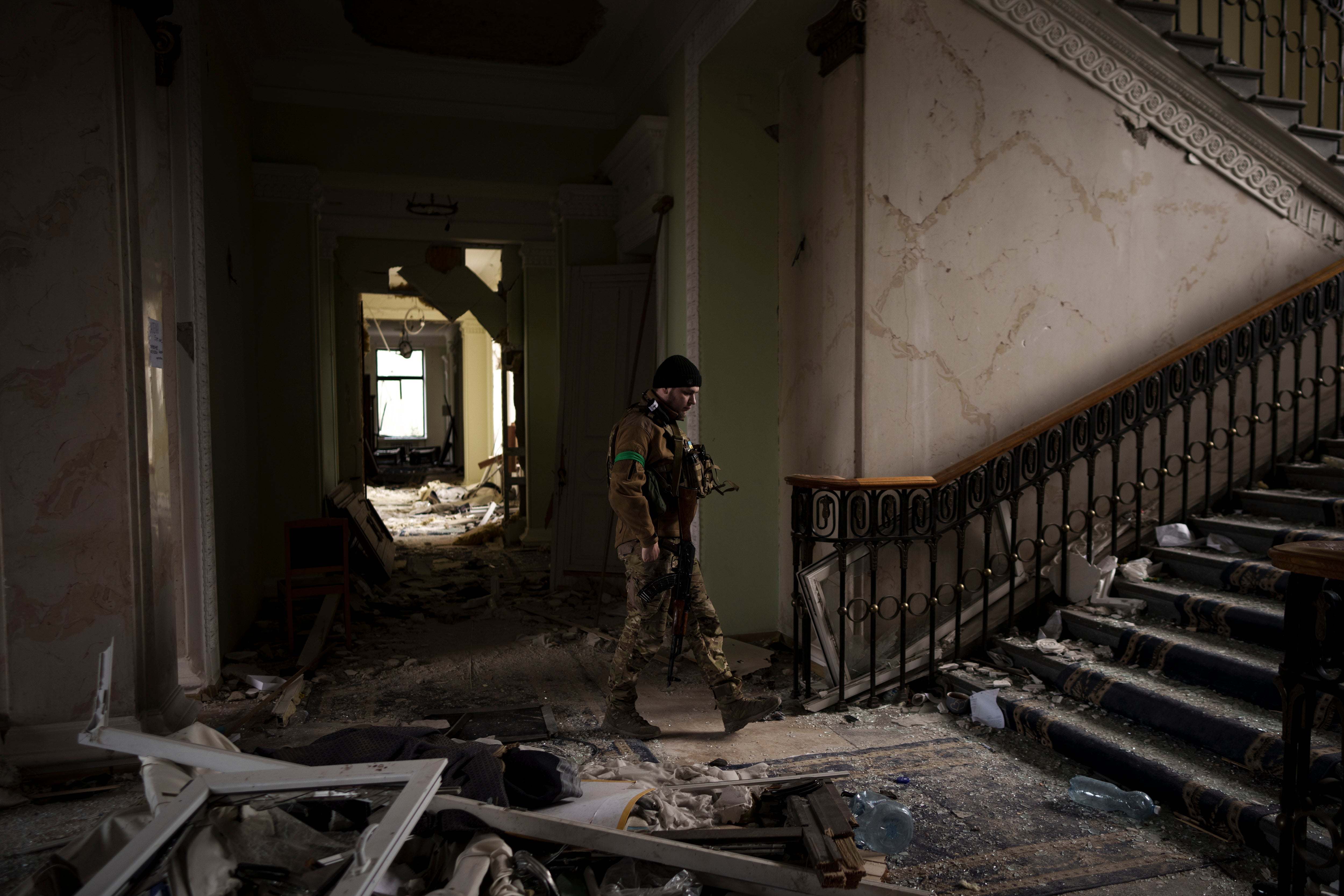
Back in the capital, Colonel Shcherbina Mykhailo, the deputy chief of security for Kyiv municipality, one of the main figures planning the defence of the city, was preparing for the worst-case scenario – a Russian offensive from across the Belarus border.
The colonel, a veteran of 37 years, had taken part in some of the bloodiest battles of the separatist war, including Debaltseve. The defence of Kyiv, he said, would depend a lot on citizen volunteers, and he lamented that the government had not heeded his plea to integrate them much earlier into the wider TDF (Territorial Defence Force).
“Will Putin try to take Kyiv? We shall have to see. It may sound mad, but does anyone know his state of mind? It’s very encouraging that we have these people volunteering. But we have had this threat to Ukraine from Russia for years now and there should have been an eight-year roadmap,” he said.
The citizen volunteers had been practising combat at weekends for months in parks and forests across the country, their wooden and plastic guns causing some mirth among the international media in attendance.
The volunteers, however, would prove their worth, not just in supporting troops, but also in the fighting which took place when the Russians came for Kyiv a month later.
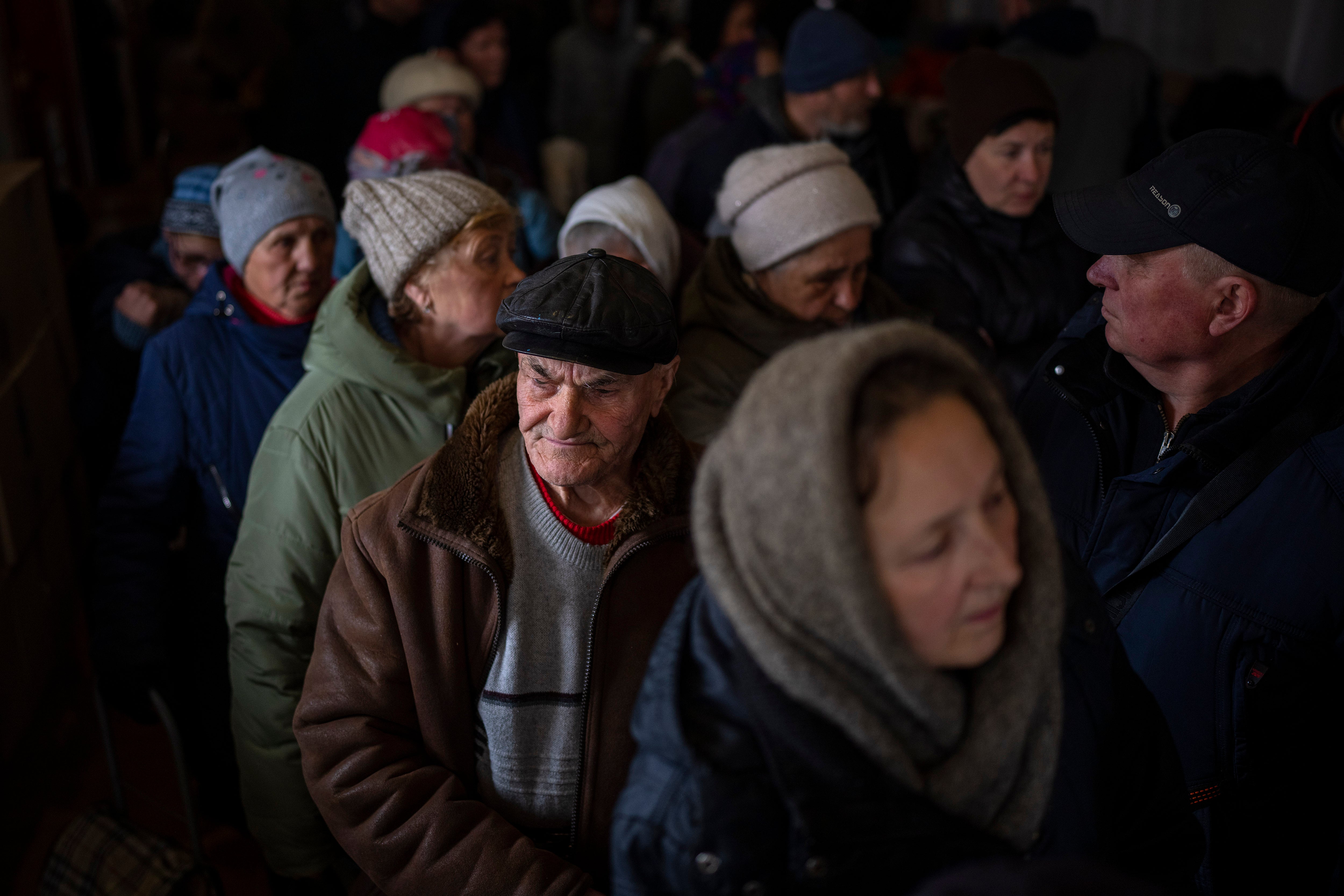
Among those taking part in the exercises in Kyiv who went on to join the resistance against the Russians was Olekseii Bida.
He had been kidnapped and tortured by separatists in Luhansk in the east. Naked, tied to a chair while being repeatedly kicked and punched, he was told his ordeal would be over as soon as he revealed the “secrets of the traitors” who were taking part in the protests.
“That was eight years ago. What I kept thinking was they knew I have no secrets,” reflected the 47-year-old graphic designer. “We were demonstrating just as people were demonstrating in Kyiv and so many other cities all over the country. I knew that and they knew that. I guess they just liked hurting the people they hated.”
Mr Bida insisted: “I did not rush to join up in revenge for what happened to me. I have tried to follow the non-violent path. I thought about this for a long time and there seemed to be no sign of the situation getting better. Russia wants to attack us. What choice have we got? We need to defend ourselves.”
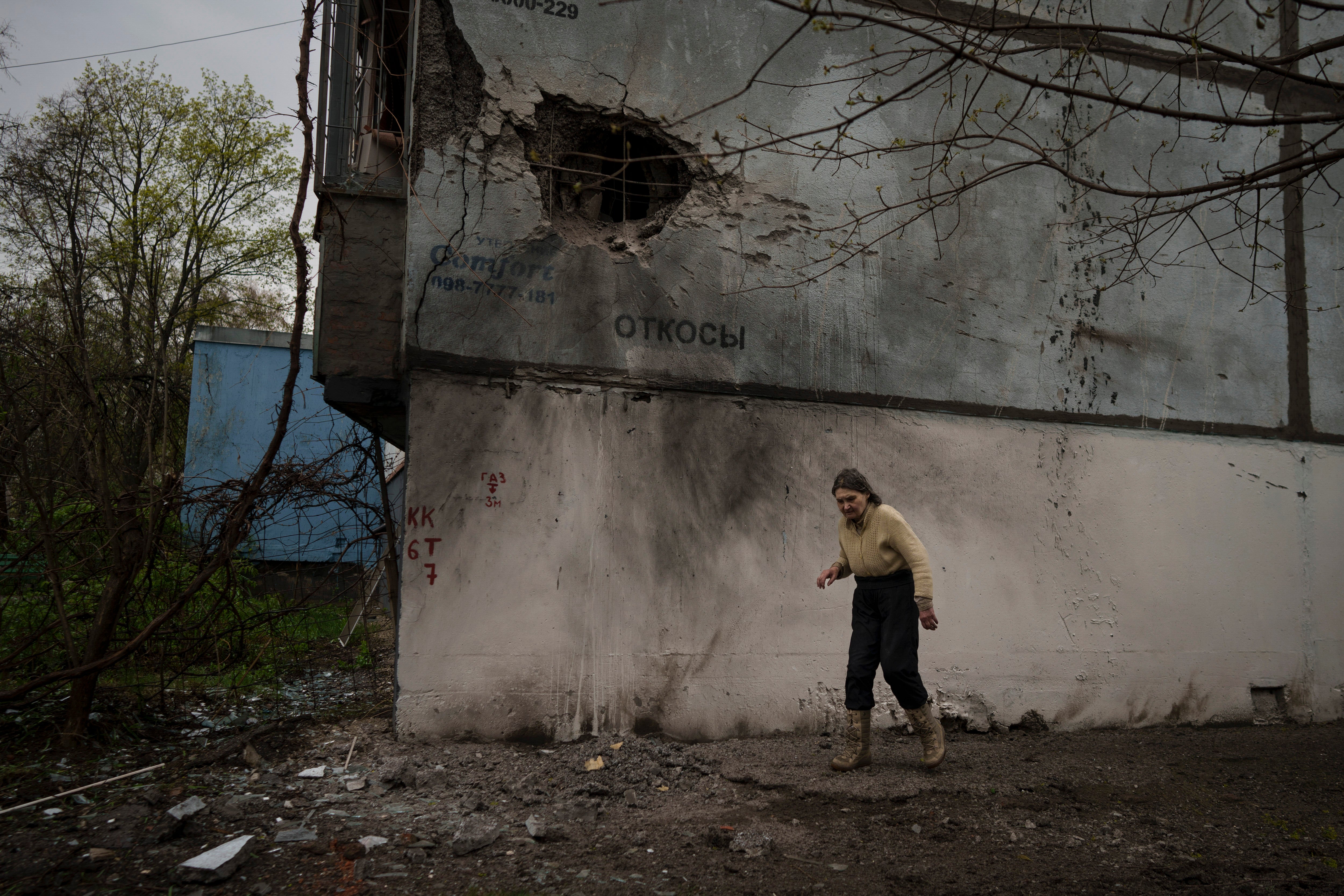
There were mounting rumours that the attack would take place on 16 February followed by a mini-exodus of people from the main cities, including Kyiv.
But a flurry of diplomacy, with western leaders and officials beating a path to Moscow, seemed to have averted conflict for the time being. The Russians sought to exploit what the Kremlin called “alarmist western rhetoric” by removing some military units from the border.
But illusions of peace disappeared six days later when Putin recognised the independence of the “people’s republics” of Donetsk and Luhansk after an extraordinary televised session of Russia’s security council. This, it was clear, was the precursor to war.
The exodus out of Kyiv was now a major one, with the roads to the west of Ukraine and towards the Polish border blocked solid with people fleeing. Shops and offices shut, the capital becoming a place emptying by the hour.
A large number of international journalists also left in a rush, most of them rebasing in Lviv. The atmosphere among the remaining media became calmer, with those deciding to stay prepared for the long haul. Most of us had covered numerous conflicts. But we had not, we had to remind ourselves, been in a war before between two European states – one of them nuclear armed.
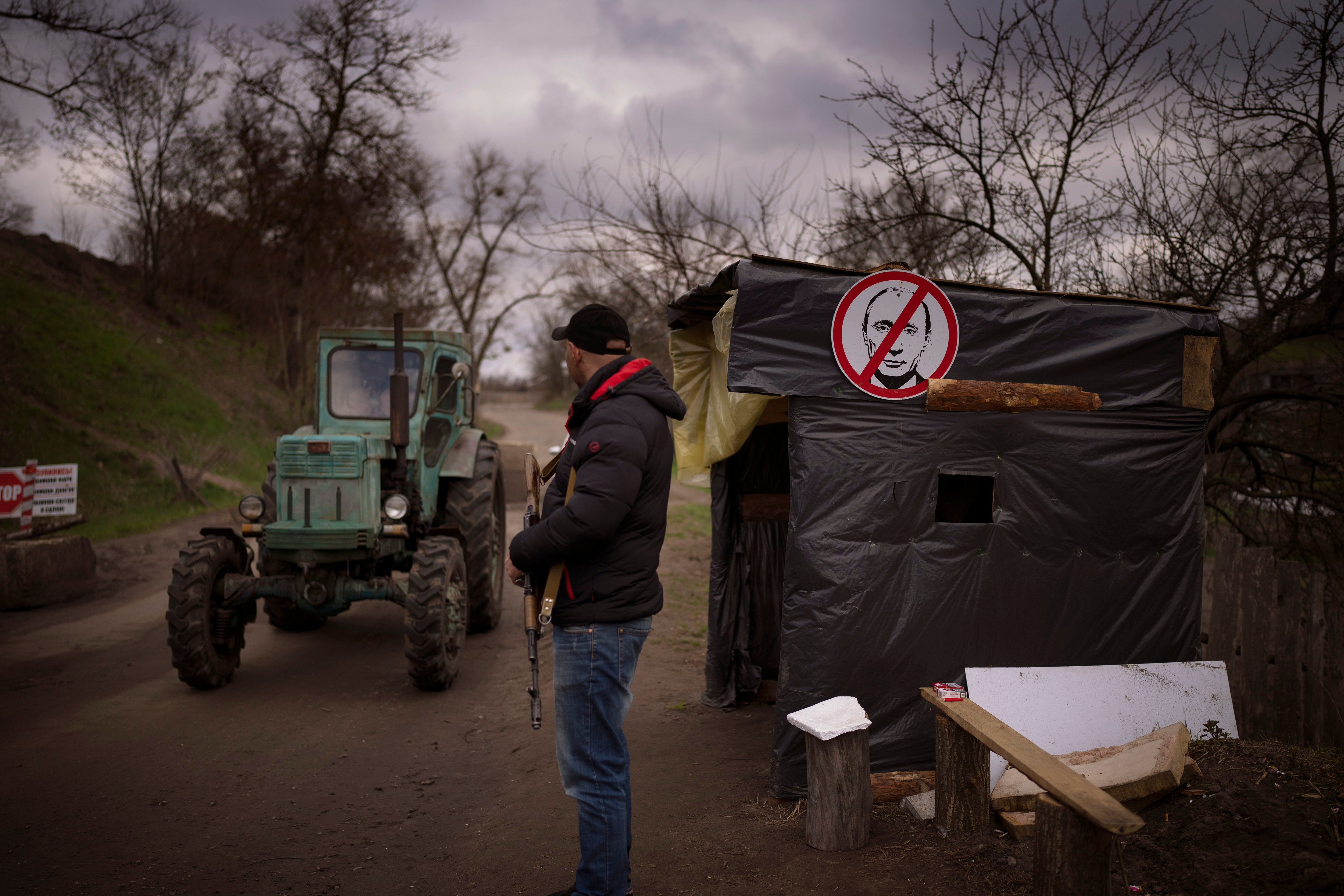
Kyiv was getting pounded daily and nightly. Ukrainian air defences managed to shoot down a large number of incoming missiles but others got through, hitting apartment blocks, destroying homes, killing and maiming people.
Russian raiding parties repeatedly tried to get into the city. They were repulsed in firefights in the suburbs. It was claimed that infiltrators, including a team of Chechens, were in the capital to assassinate President Volodymyr Zelensky and members of his government. We saw the dead bodies of some of these alleged hitmen, others being arrested. It was difficult to work out what was going on.
Ferocious clashes continued just outside the capital. Covering these battles became increasingly risky. Five journalists were killed in the first month of the fighting. They included Pierre Zakrzewski and Brent Renaud, both of whom I knew, who were killed in Gorenka and Irpin. A Sky News team of Stuart Ramsay, Dominique Van Heerden, Martin Vowles and Richie Mockler, all good friends, and their Ukrainian producer Andrii Lytvynenko, were lucky to escape with their lives after an ambush in Bucha in which Stuart and Richie were both shot.
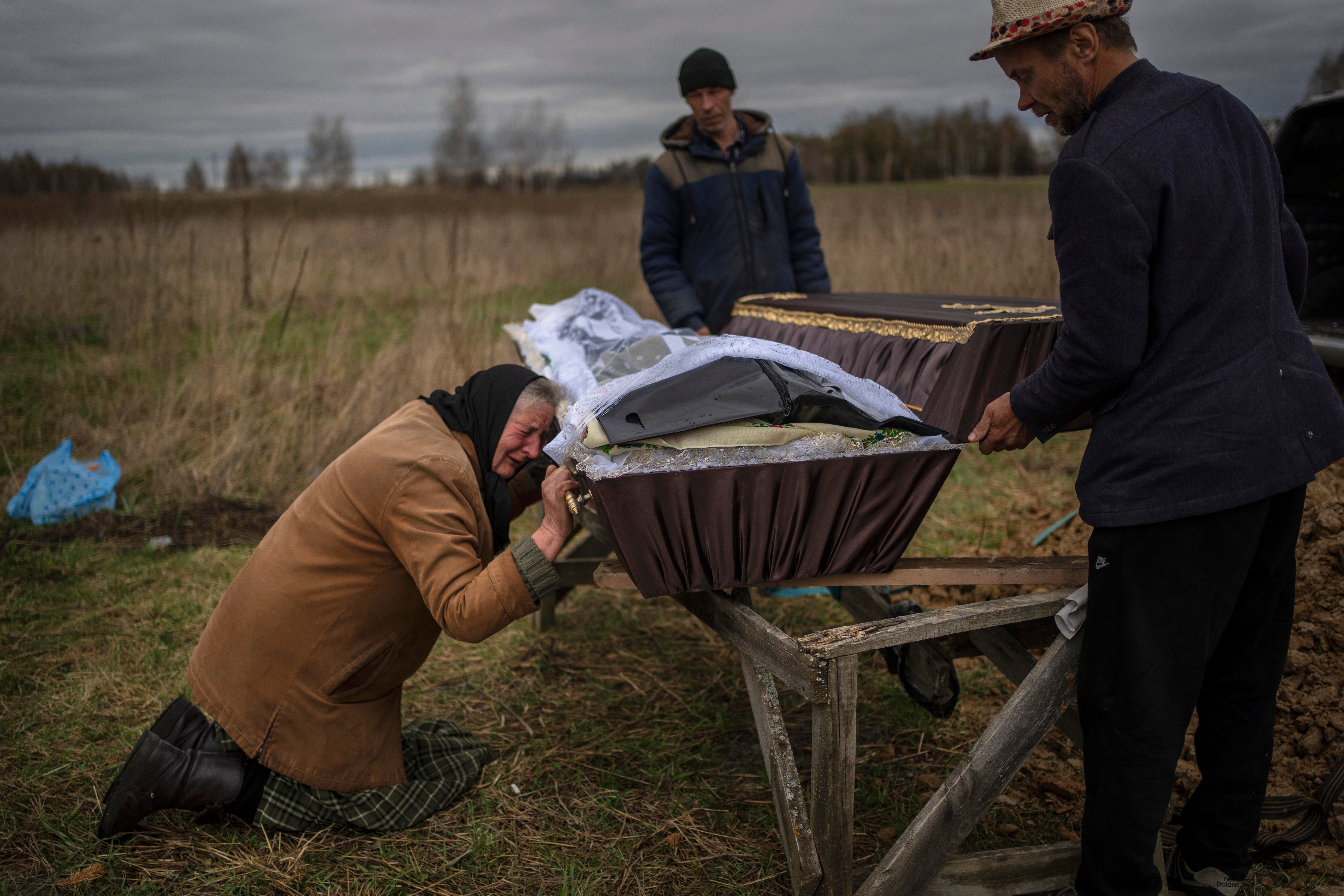
Irpin, 12 miles northwest of Kyiv, was a particular Russian target for attacks, breaking through from there would have left the invading force with a 30-minute drive into the heart of Kyiv.
I accompanied a team of volunteers who had gone to Irpin to deliver food, and bring out residents. The evacuation was under way when shellfire, loud and near, broke out spreading panic as people began to scramble out of a bus due to take them to safety.
The activists pleaded with them to get back on board, saying they would be trapped behind enemy lines otherwise. But the families, calling out to each other, with children crying and pet dogs barking, ran to a church nearby. Soon it was too late for them to escape.
Two of those who failed to get away, brothers Youri and Valentin Ostapenko, were killed, their bodies found after the Russians had withdrawn.
On that afternoon, however, they had thought it was safer not to risk the roads out of the district of Slayvo.
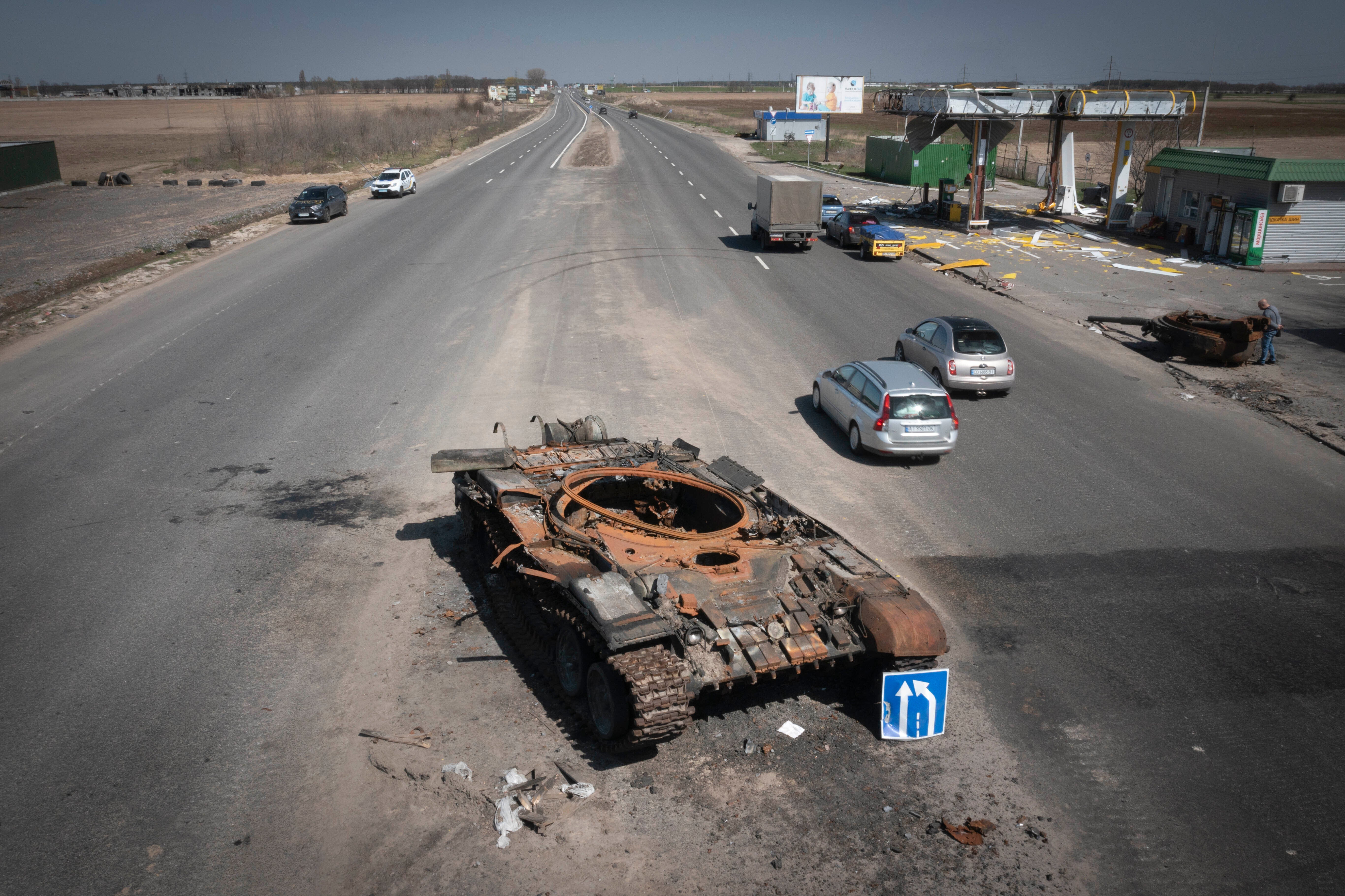
The activists, fearing the worst if they were to fall into Russian hands, roared away in their cars, the bus left behind. The driver sat petrified, hands clutching the steering wheel. Within minutes, two local cars ahead of them were hit by mortar fire, forcing them into screeching U-turns. Three people, one of them a child, were found in the burning wreckages.
Leaving Slayvo district, with Russian gunfire getting closer, we took the back route towards Kyiv in our car before an explosion to the front brought us to a juddering halt – a military vehicle had been hit and set on fire. The Ukrainian soldiers who emerged around us from ditches beside the road said it was a Russian MT-LB armoured personnel carrier leading in troops.
We eventually left Irpin, walking over rubble across a shallow riverbed under a bridge blown up by the Ukrainians to stop the Russian advance, leaving our car alongside dozens of others on the approach road.
Strategic locations changed hands. Two visits to Makariv illustrated the pace of destruction. The town was one of the first to be liberated by the Ukrainians after being taken over by Russians, in a major blow to their plans to take Kyiv which lay 32 miles away.
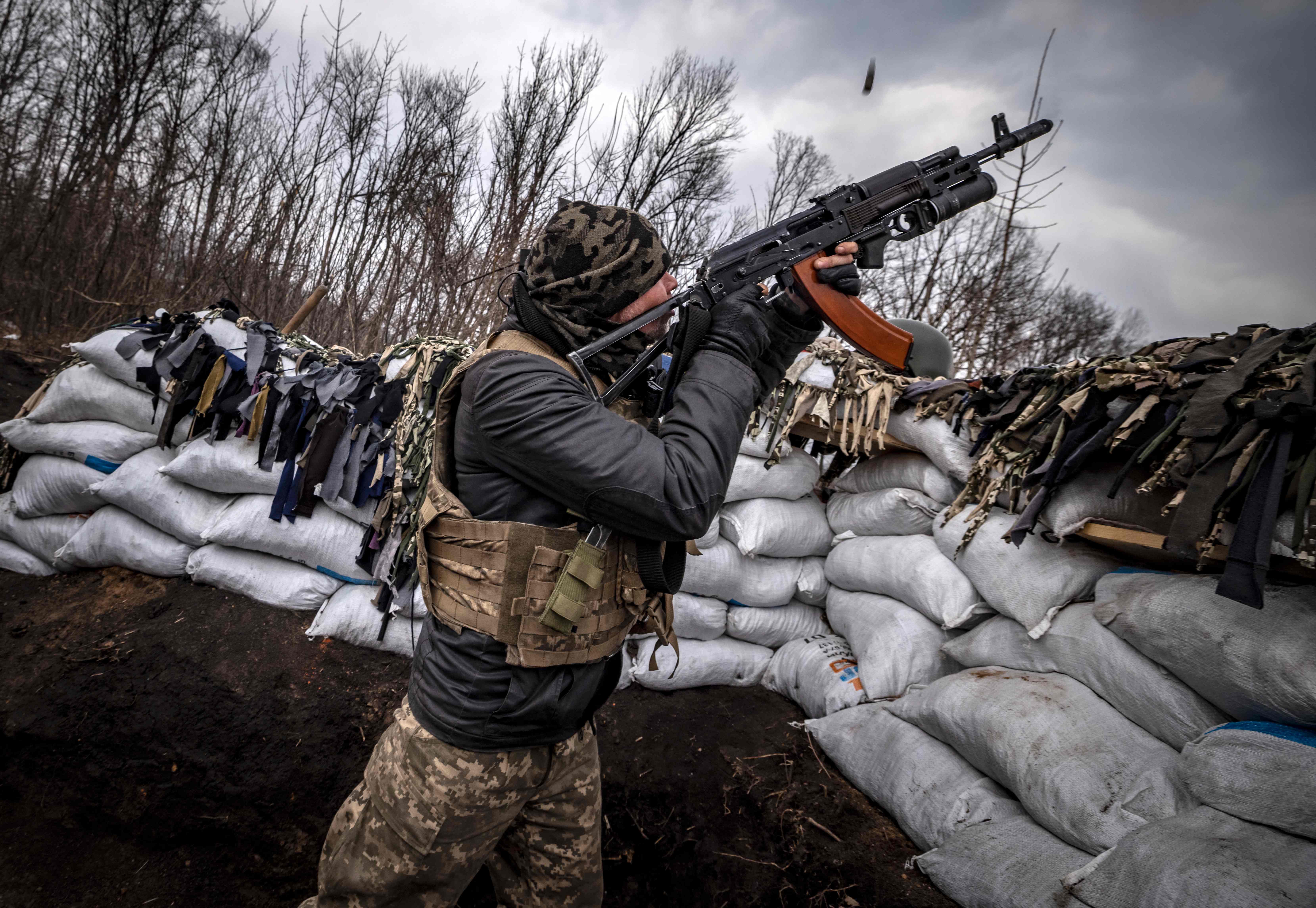
“Welcome to hell,” said the soldier at the checkpoint, gesturing to the scene of devastation. We had been there earlier when the town and the surrounding areas were a free fire zone. What was left of the city centre had mostly disappeared.
There was still a Russian military presence in the countryside around Makariv. Rocket-propelled grenades aimed at a Ukrainian position, fired from a field of long grass, flew across the road as we travelled from the village of Yasnagorodka into Makariv.
Almost every building had been damaged and around 200 people were killed. Around 135 were found later to have been shot dead, apparently executed.
Local officials claimed there had been deliberate attempts to eliminate them. Ivan Yusiovich, the head of the 16 districts in Makariv’s rural council, was holding an evening meeting of the emergency committee when a wave of missiles came in. The blast threw him out of his chair across the room. The stairwell outside his office was smeared with bloodstains from his wounds.
“The noise was incredibly loud and the windows exploded, there was smoke and dust everywhere,” he said. “I could feel blood on my face, and knew I was injured – but did not know how badly. I was very lucky to stay alive, others died. They tried to kill people and destroy the institutions of our society.”
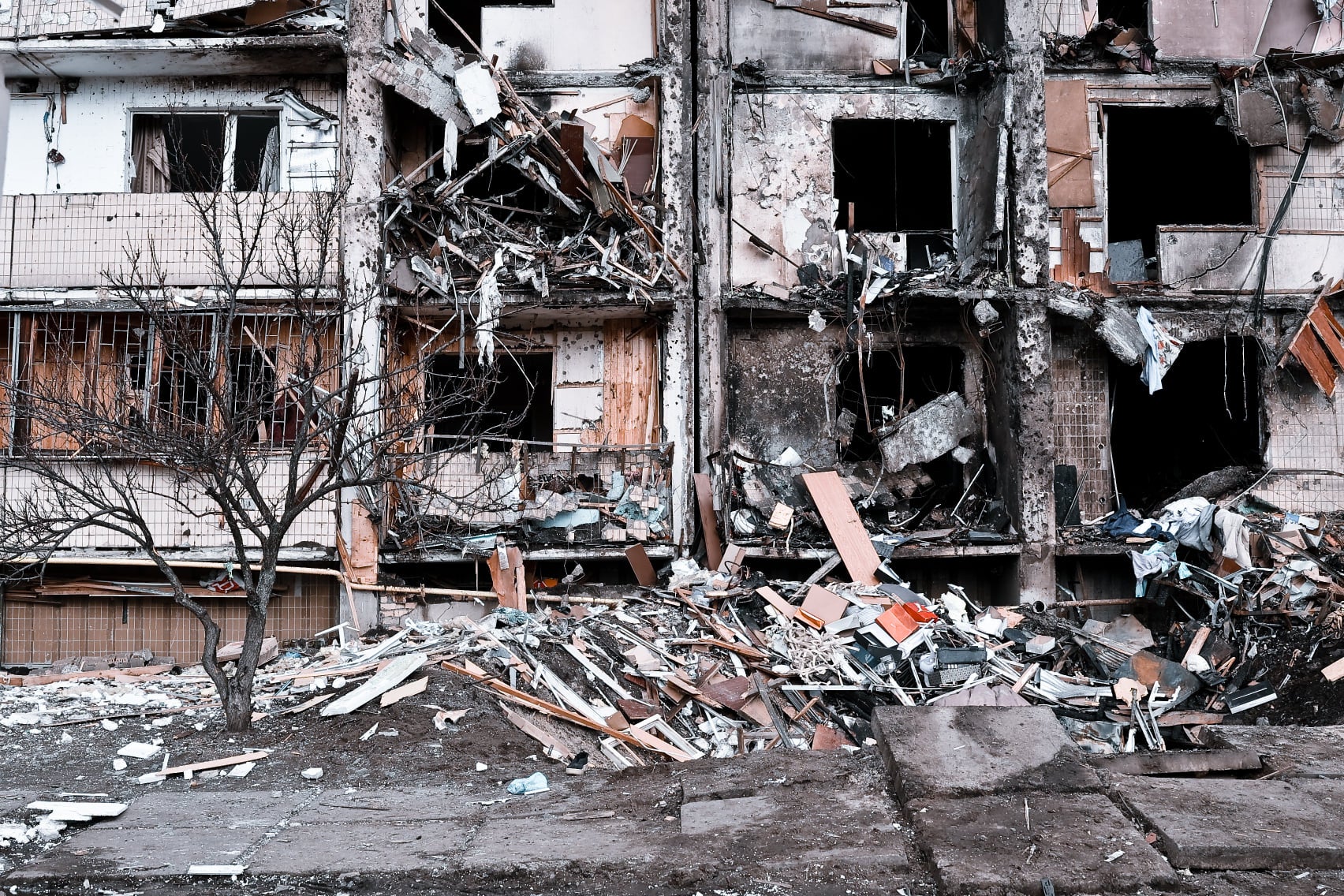
Among the places hit was a Russian Orthodox church, St Michael’s, with extensive damage from a missile strike.
I found Father Roman, who I had met just after the attack, clearing up debris at the garden of his church from the day’s stray shelling. He had stayed on at his tiny rectory, living there without electricity or water, despite repeated pleas from his family to leave for a safer place. He did not want to abandon his few remaining parishioners, mainly elderly people, who depend on him, he said.
Terrible things had happened, but it was time to look ahead, said Father Roman, who was planning the Easter service. “I am hoping that people who have left would start coming back to their homes now that Makariv has been retaken. Easter is a time of rebirth of course, it will be a good time to get our community back together and start to live again,” he wanted to stress.
The people of Chernihiv were also commemorating the retreat of Russian forces. The town, 45 miles from the border with Belarus, was a key strategic location that the Kremlin badly needed to capture in order to secure its supply lines and launch an all-out assault on Kyiv, 91 miles to the south.
Chernihiv, besieged and bombarded, hung on, and was back in Ukrainian hands, but it had paid a terrible price for its resistance. Around 550 civilians are estimated to have been killed, with hundreds more believed to be buried under the rubble.
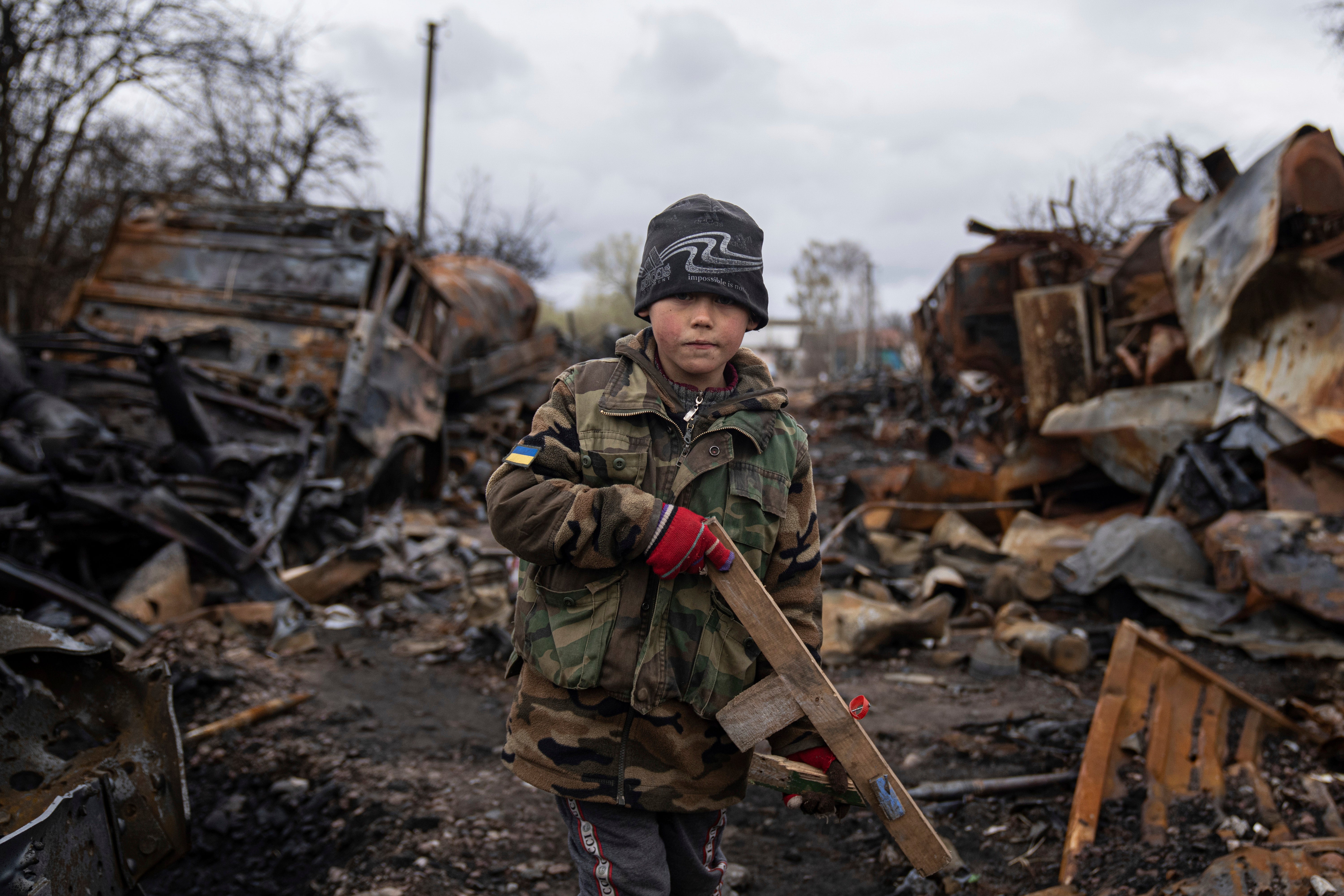
Seventy per cent of the city, with its great historic and religious heritage, has been demolished after days and nights of bombardment. More than half the population of 290,000 fled as the attacks continued relentlessly. Electricity and water were cut off, and food stocks dwindled.
Many of the injuries and deaths have been caused by the use of unguided air weapons of the type that caused such devastation in another of the Kremlin’s conflicts: the war in Syria. One of the most lethal examples in Chernihiv was the massacre of 47 people who had gathered at the city’s central square on 3 March, when eight “dumb bombs” were dropped.
The village of Novoselivka, just outside Chernihiv, had been captured by the Russians and little of it had been left standing.
In just one neighbourhood a woman was weeping quietly as her father’s body was exhumed from his garden. Two doors along a neighbour was rushing her family out of the house after finding an unexploded bomb in a bedroom. Twenty yards away a young man stared at a pile of debris, which was the family home, wondering how he had survived while his mother had been severely injured.
Oksana Brin’s 63-year-old father, Petro Kasinuk, was killed at his home in an airstrike. So relentless were the attacks at the time that it proved impossible to take his body to the graveyard a quarter of a mile away. Instead, he was hurriedly buried in the garden.
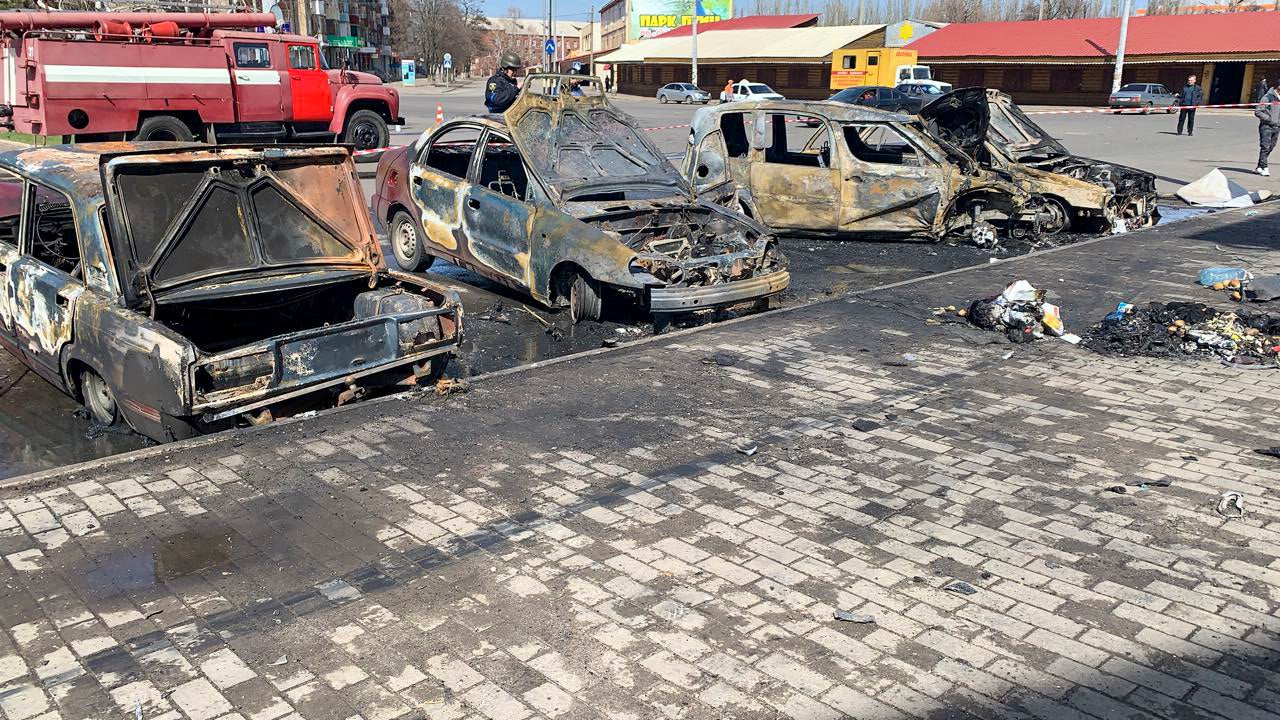
Officials from the city council came to the half-demolished house to take Mr Kasinuk away for reburial. He was to be laid to rest in the civilian part of the village cemetery. The Russians have rolled tanks over the military section, making it look like a ploughed field full of broken coffins and gravestones.
“He was such a stubborn old man – a lovely man, but a stubborn man. I begged him so many times to go somewhere safer, but he just refused to leave,” Ms Brin tearfully recalled of her father. “I asked him to move in with me so that I could at least keep an eye on him. My house was just over there, but he would not agree to that either.”
“But my house actually got bombed at the end. I had to hide in the basement with my six-year-old daughter as our home burned above us. I could just imagine my father cursing away if he had given in and moved in with me and then the bombing took place,” she continued, the sobs now turning to giggles.
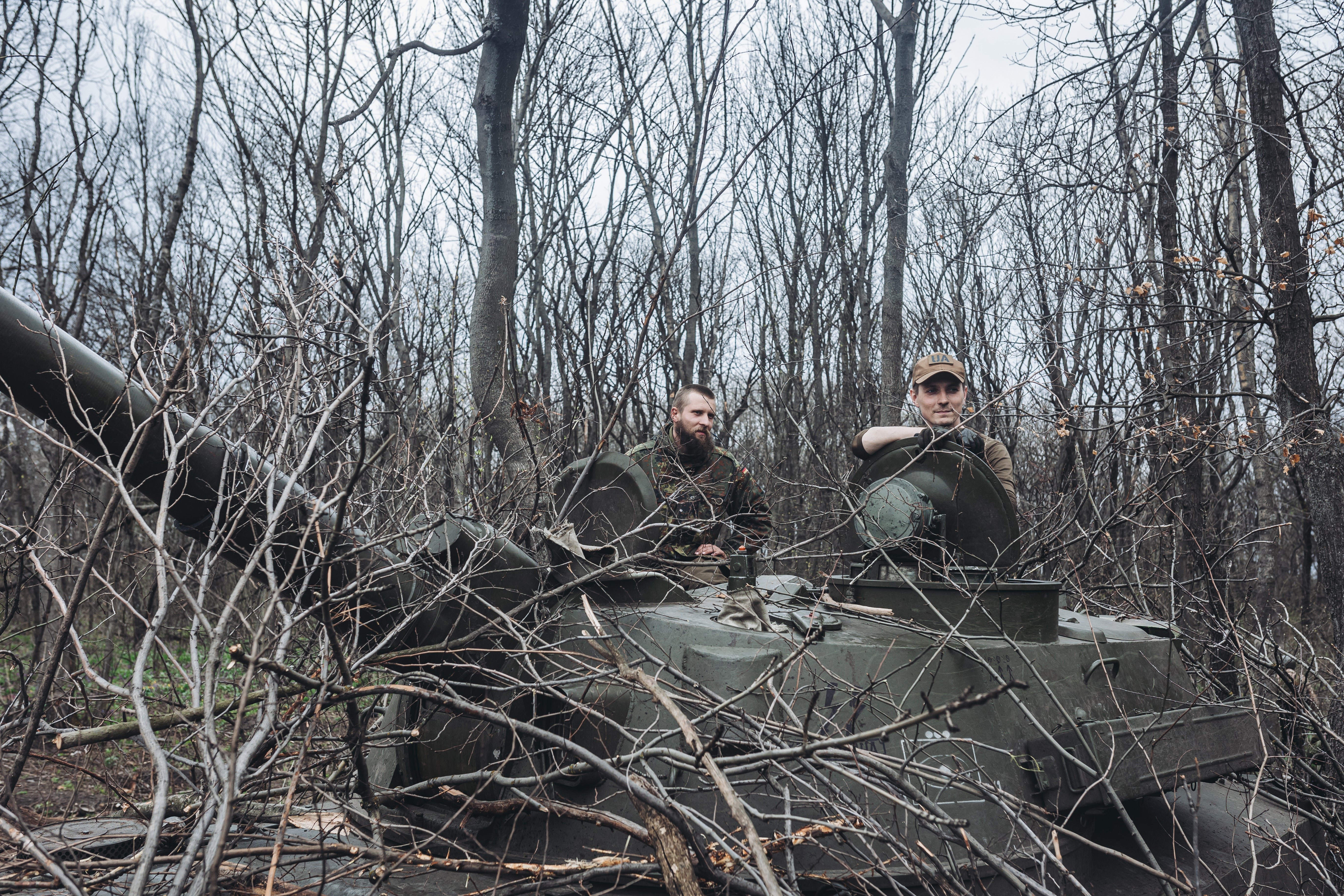
The message from the people and officials in Chernihiv was that the town will recover and rebuild. It seems unlikely that the Russians, after being driven out, would try to invade from the north again.
The people of Kharkiv, 150 miles from the Donbas, have no such hope for now. The Russians attempted to storm Ukraine’s second city and failed, but the bombing continued and, with the Kremlin’s focus moving to the east, there is renewed fighting nearby.
With the Russian bombing of Kyiv beginning to fall away, I went back to Kharkiv to find the city under intense shelling. Captain Aleksandr Osadchy, of the volunteer “Cossack Battalion” 226, was telling me about the mounting civilian casualties when he paused, and added quietly that he had learned of his mother’s death just 24 hours earlier.
His brother Andrei, a former soldier who had stayed at home to look after 85-year-old Maria, joined the army in Slovyansk the day after burying her. “He knows, we all know, that this war is far from over,” said Captain Osadchy. “We need to continue to defend our country, our community and avenge those who have been killed.
“The attacks on the Donbas have started and we have the Russians trying to get Izium, not far from here, to try and seal it off. I think we know that it’s going to be pretty bad in the Donbas. Look at what happened in the villages around here.”
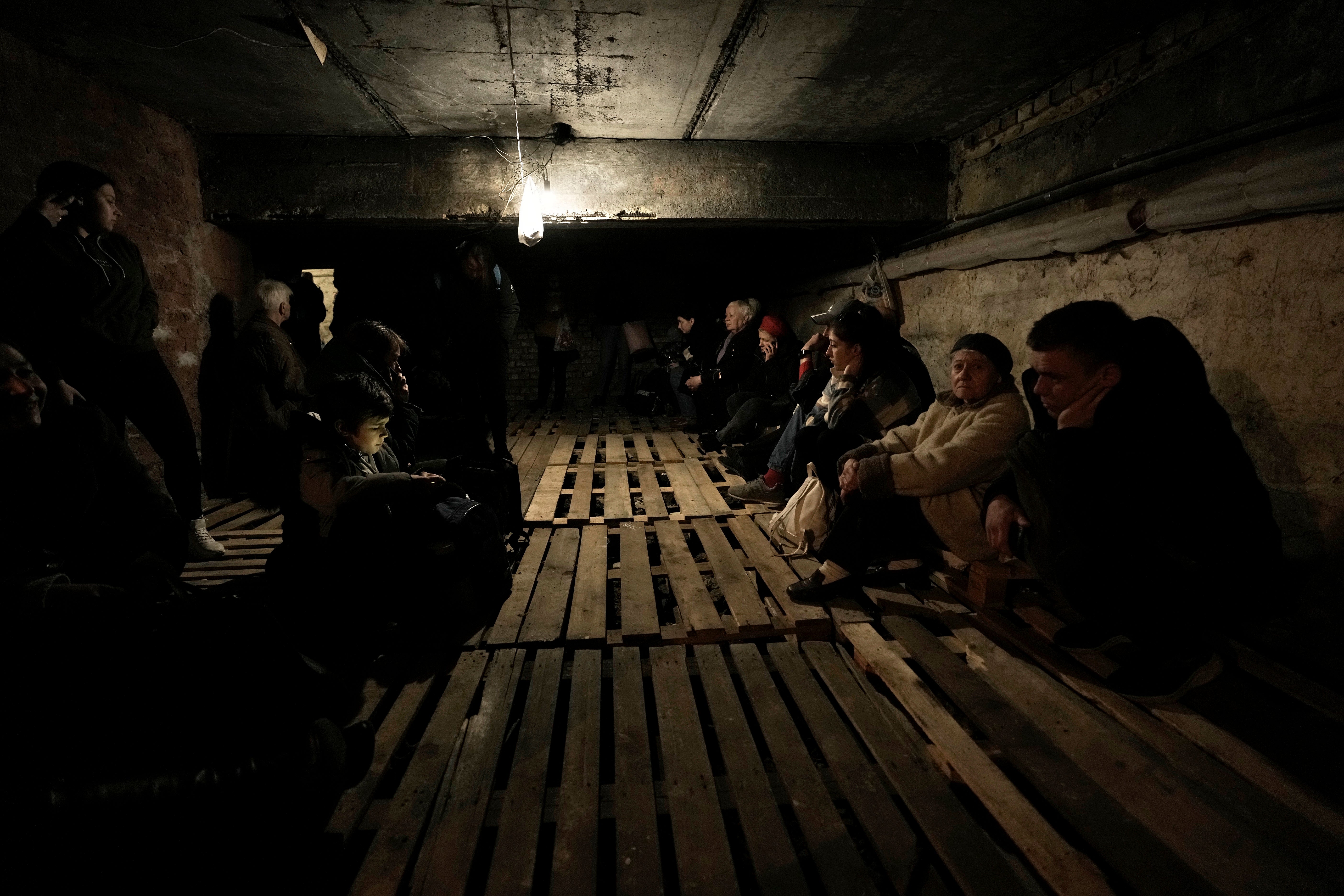
To keep up to speed with all the latest opinions and comment sign up to our free weekly Voices Dispatches newsletter by clicking here
Tales of murders and rapes emerged from the villages around Kharkiv. A young mother had been raped by a drunken Russian soldier in Mala Rahan, one of many tales of sexual abuse. People shot dead had been buried in shallow graves. There was also retribution – bodies of dead Russians lay in the back lanes of the village and the fields outside.
Kiril Semenov, who told me before the war that “it was unthinkable” for him and his friends to fight the Russians, had not picked up a gun, but he was part of the volunteer force ferrying food and supplies to Ukrainian soldiers and helping clear up the damage caused by Russian attacks.
“The world has turned upside down for us in the last few months, everything has changed,” he said, standing in front of a blasted building which was once a university annexe.
“Putin has bombed and killed the Russian-speaking people here he said he was going to save. He is doing the same in the Donbas. It has made us realise that as Ukrainians we may have our differences, but we must stand together against those who invade us.”







